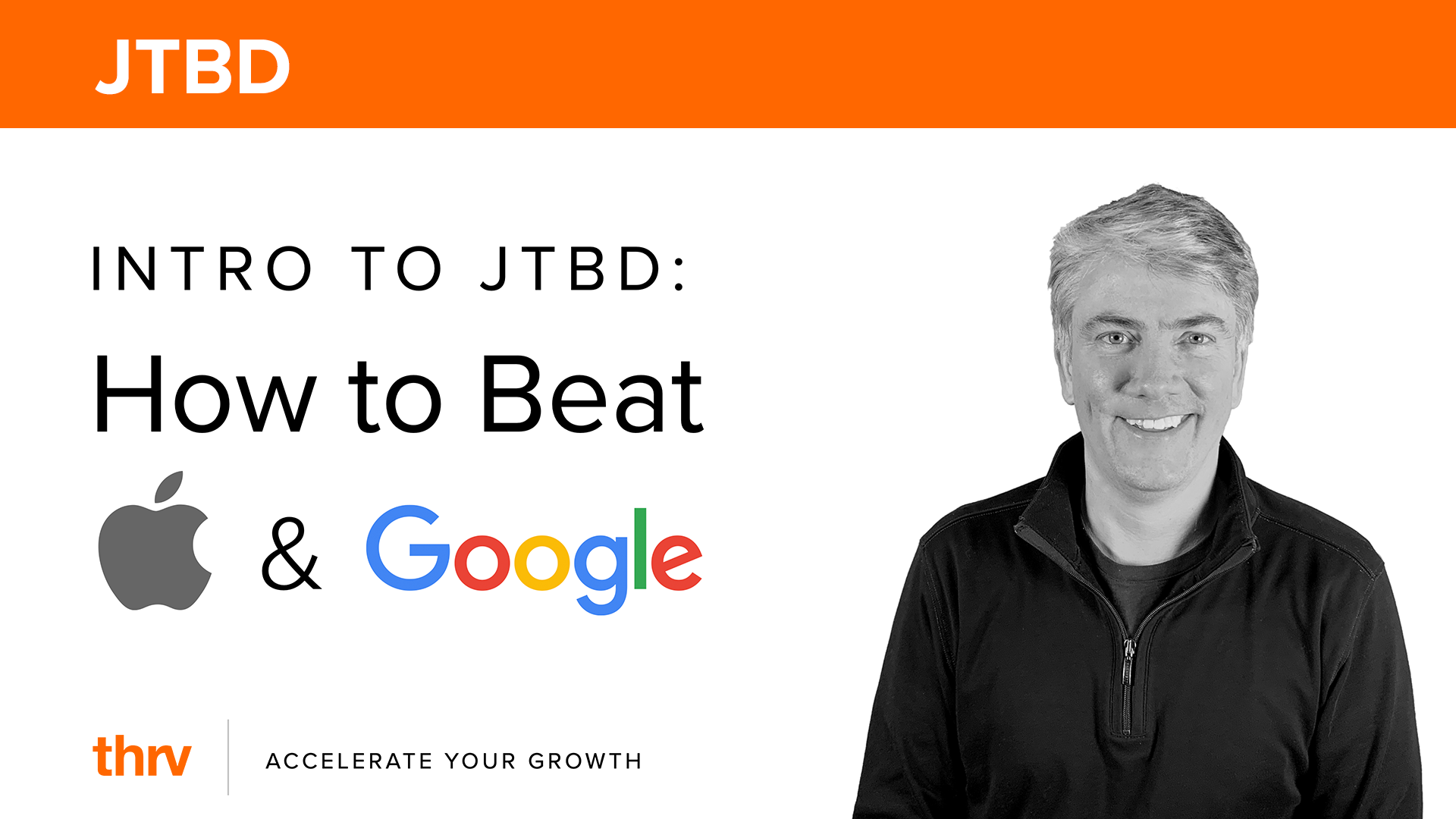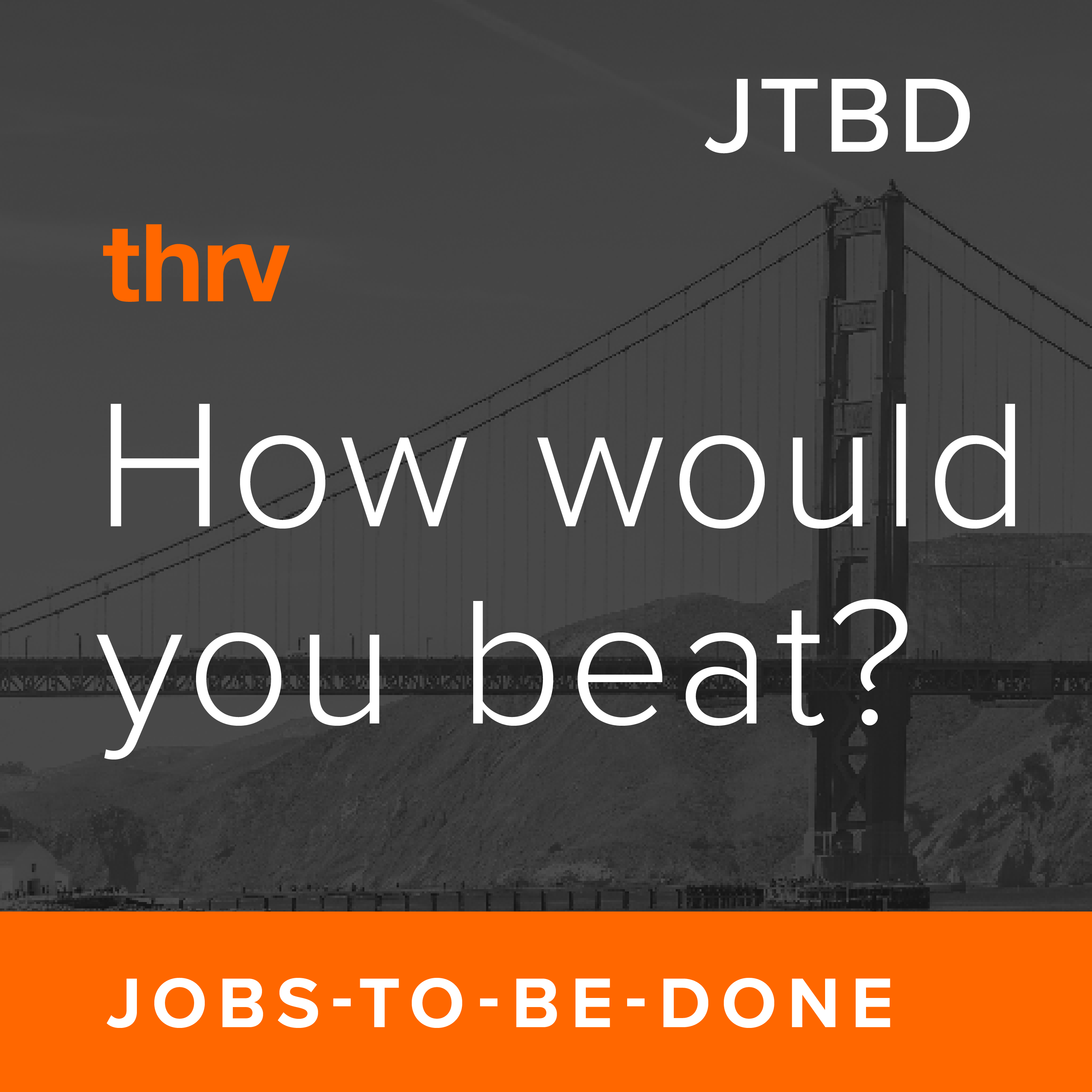September 1, 2022
How would you beat Steve Jobs with Jobs-To-Be-Done?
In this latest episode of the How Would You Beat podcast, we looked at how you can beat Steve Jobs or how you and your product team can emulate his approach to product development.
Do you decide that customers do not know what they need and that you know better? Do you “steal” ideas from other companies? Do you start firing people in elevators?
Well, first of all, a lot of what you hear about the story of Steve Jobs is more myth and legend than the truth. He definitely did not say that he did not care about the customer. Instead, he advocated starting with the customer experience and moving backwards to the product. That customer focus is actually a good place to start when looking at ways to succeed like Steve Jobs:
Approach # 1: Simplify a B2B product for the consumer
Let’s take a look at the Apple II Plus, which was sold in the late 1970s and early 80s. It was a pretty amazing product for its time with dual floppy drives and a whole 64K of RAM (although this might be downright hilarious to us now), but mainly because you could type basic programming language into the home screen and then begin using it.
Other computers on the market needed customers to know programming to use them. And cost $250,000.
Steve jobs not only brought the market down to $2,500. He seemed to think that he was going to make it easier for people to program computers. And in doing so, he made it a B2C market. Until then, computers were strictly B2B machines; there was no such thing as a consumer computer. By making the product user-friendly and affordable, Steve Jobs created a B2C market for computers. Even in those days, you can see his focus on what we’re calling the customer’s job-to-be-done today.
Approach # 2: Quantify the customer value of innovation
“Steve Jobs - the inventor” is a myth. He did not invent the graphical user interface; it was created at Xerox PARC. However, he immediately spotted its usefulness and figured out how it could help make the product (in this case, the computer) more valuable or easier to use. This is an excellent example of a typical Steve Jobs innovation method, where he never ever lost sight of the fact that people are always going to use what is easier to use.
Another popular myth is that Steve Jobs invented the touchscreen, but actually, there was a team working on better interfaces - not for phones, but for computers. When Steve Jobs met them, they showed him the touchscreen, an existing invention, as a computer interface, and he said it wasn’t easy enough to use. They kept working on making it more useful, and when Apple received a phone project, they connected the dots and decided to put the touchscreen into the phone. He was really good at figuring out how new technology could be useful from a customer’s standpoint.
Companies need to think about this: How do you make it easier and easier for your customer to get the job done? When you are planning your product and improving on it, you need to think about how it can get the customer’s job done in fewer steps, until gradually it takes only one step or a single gesture to get the job done.
Emulating Steve Jobs definitely means tapping into other brilliant individuals on your team. Steve Jobs wasn’t a singular individual with great ideas that he got other people to implement. If you actually read about the development of these products, you see him more in the role of an editor or curator of features that would work for the customer. What we see as successful products created by Steve Jobs are actually successfully prioritized or smartly selected ideas. If you work on a product team, you know that there’s no shortage of ideas. It's the prioritization and the setting of direction for the ideas or identifying what customers struggle with that is actually a challenge.
Approach # 3: Develop your own platform IF it makes sense
When you are studying the story of Steve Jobs to do smarter business, the timing of his career is also important. He had the benefit of being part of the earliest stages of the PC revolution, which means he was always thinking at an operating system level, which is the ultimate platform in a sense. We can’t say that he tried to create a solution that would publish newspaper text using the Microsoft platform and found it to be terrible, which is why he developed his own platform, but the question is very pertinent today with web 3, blockchain, and AI. You should be asking yourself, “Are any of the AI platforms good enough to make my solution truly valuable, or do I need to build a new platform, even if it is to get a very narrow job done?”
The point is that whatever you come up with has to be better than what is available today. That’s the essence of the Steve Jobs innovation method. Of course, you cannot forget to credit Steve Wozniak as the hardware genius who had the skill to put a computer together; Steve Jobs couldn’t do that, but he brought that unwavering focus on quality. The iPod could have been yet another mp3 player, but Steve Jobs said no to that, and the iPod became the first music player with its own operating system.
In Jobs-to-be-Done we would word this as: “Don’t launch a product till it creates enough customer value.” Notice how Apple isn’t necessarily first: The Blackberry came before the iPhone, and the GUI was not actually invented in-house. Ditch the Minimal Viable Product concept. You want your product to be valuable, not just viable. The Microsoft Zune was a viable product, but it didn’t deliver any additional value over and above the iPod that was already on the market and is, therefore, a really famous failure story.
With your eye on launching a really, really valuable product, it becomes easier to answer the “Do I need to develop the platform?” question. If existing platforms don’t support what you need to build a valuable product, then you know that you need to build your own. So let’s look at phones - you get a lot of jobs done with phones, but they are not the ultimate in efficiency, right? You have to hold them in your hands, which becomes a problem when you need your hands for other tasks. Smartwatches can take care of that inconvenience, but they can also be really obtrusive; some people say that they feel like they are on a leash or a tether when they use a smartwatch. Moreover, phones - and by extension, also smartwatches - could be seen inhibiting the development of real bonds, like those between parents and children. There are a lot of jobs that these platforms achieve, but here’s the big question: Could a new platform get these jobs done without inconveniences like bugs and crashes and without needing to be held in one's hands?
Conclusion
If you’re looking to beat Steve Jobs today, maybe you are looking to build a new platform that can get jobs done better than what he created. Of course, beating the successful products that Steve Jobs created is going to be no mean feat.
If you want to adopt Steve Jobs innovation methods using Jobs-to-be-Done, it can be really easy. Especially if you have a survey mechanism and automated insights at a click. The thrv software puts your customers’ unmet needs into your roadmapping prioritization process. The app automates the process of breaking down a customer’s job steps and customer needs, and there is a survey tool to identify which needs are unmet and each segment’s willingness to pay to get the job done. Product, marketing, and sales teams that use thrv can generate growth on three horizons:
- Short-term growth by creating marketing and sales messaging that connects your solution to the unmet needs of your customers and the leads in your pipeline.
- Medium-term growth by aligning your product roadmap with the unmet needs of your customers and the leads in your pipeline
- Long-term growth by aligning your product innovation with the unmet needs of new customers in the market
You can use the thrv software on your own or engage thrv to join your team and partner with you to execute the work and accelerate your growth.
If you want to learn more about Jobs-to-be-Done innovation methods, contact us today.
Posted by Jay Haynes View all Posts by Jay Haynes





